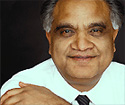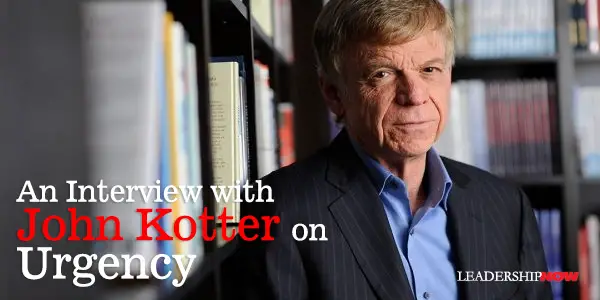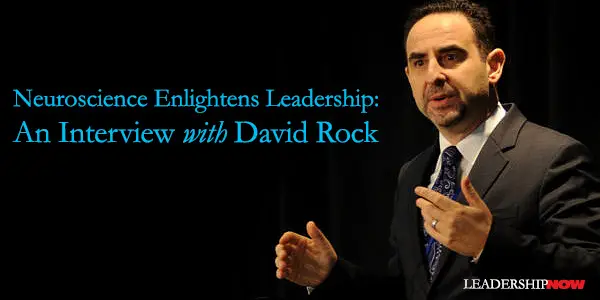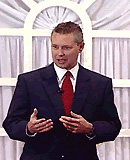 Leading Blog | Posts by Category |
 Leading Blog | Posts by Category |
02.09.11

Taking Another Look: Leading Minds on Reflection Part 2
In part two of this series, Tom Asacker philosophizes about the nature of reflection. His insights help us to understand that until we start to see our connection to reality, core changes rarely happen. Have we given the proper consideration to the impact of what we do? Then, Brian Orchard emphasizes the need to slow down enough to absorb what we are experiencing. He talks about the need to take a second look to gain understanding and the importance of getting counsel in decision making.
I’ve noticed something interesting of late. I’ve been spending more time reflecting on my work than passionately involved in the doing of it. To an outsider, it may look like idleness. In fact, history informs me that it’s a necessary prelude to meaningful change, to boldness and growth. Our work should be designed to move us forward, toward a worthy ideal, meaning, and a better life. But in order to get there, we must occasionally pause from its narcotic effect and critically evaluate its impact on our happiness and well-being, and its resulting influence on our community and environment. We must sit quietly and reflect. Reflection is not daydreaming. Reflection is imaginative inquiry; it’s an internal dialogue that asks, Am I making a difference? Is this the best that I can do? Will people be advanced by my efforts? Will my children be proud of my actions? Yes, there is boldness in action. But we must follow action with quiet reflection for that boldness to remain relevant and vibrant. Elbert Hubbard wrote, “The reason men oppose progress is not that they hate progress, but that they love inertia.” Reflection is the path to progress. Imaginative reflection breaks the powerful grasp of inertia—the desire to stay the course regardless of the impact on our lives—and moves us courageously towards our higher potential.
This quote from the Guardian summarizes for me, where we are at: “Although, because of the Internet, we have become very good at collecting a wide range of factual tidbits, we are also gradually forgetting how to sit back, contemplate, and relate all these facts to each other.” And so, as Carr writes, "we're losing our ability to strike a balance between those two very different states of mind. Mentally, we're in perpetual locomotion." From my experience as a minister, I have found that an issue is rarely understood well by the first exposure to it. Our first response is usually weighted by whoever presented the issue. It takes time and thought to slowly come to a more complete understanding. The value of reflection in this case allows for a deeper understanding to be obtained by thinking about the issue and allowing it to be seen from a number of angles. There are two biblical principles that to me, support reflection. First, Proverbs 18:17 states, “The one who states his case first seems right, until the other comes and examines him.” We all have the tendency to accept the first version of what we hear, but the concept of “searching” carries the idea of talking and asking questions, but also thinking about the situation and the reconsidering of fundamental assumptions. The second is simply the whole idea of seeking counsel. This must mean a certain amount of reflection and counsel has a strong bearing on decision making. Devaluing reflection while expecting constant growth and innovation is nonsensical. It’s only when we step away from the onslaught of the day that a new direction arises (good or bad). By never stepping away and, instead, insisting on constant connectivity, you can’t be sure if what you are working on will prove you to be relevant in the future. —Daniel Patrick Forrester, Consider
More in this Series:
Posted by Michael McKinney at 10:43 AM
02.08.11

Taking Another Look: Leading Minds on Reflection Part 1
John Kotter begins this series on reflection by talking about the need to develop a reflective habit and why we don’t. Are we spending our time on the right issues? Are we delegating issues we should not be working on that could be better dealt with more locally in the organization? Kotter also stresses its importance as a continual learning tool. John Baldoni urges us to make the time to reflect to gain perspective. He reframes reflection as an action step, not a passive process.
In a world that is moving faster and faster, and changing more and in larger leaps, learning becomes a gigantic issue. Doing what you know is not enough. And learning cannot come in a classroom once every 2 years. That’s too little too late. Learning has to be an ongoing process, literally all the time. People learn in many ways. Reading really good books can help. Talking to really good people can help. Nothing wrong with going to a Harvard executive education program, but there is no better teacher than reflection on the world, and especially one’s own actions. I did X. It produced Z. But is Z what we really need? And why did X create Z? And what were the other alternatives? And can I find others (in books, discussions, HBS) that tried those other alternatives? Obviously, self awareness makes this easier. If I pay no attention to what I am really doing, what it is really producing, it’s hard to reflect on that. One can be both action oriented and reflective. Action oriented means when you know what to do and you do it. Now. Not next quarter. Let’s go. Reflection means using the time on airplanes, when you’re not on the slopes or with family at the ski lodge, Zenning-out on the beach—whatever—to think. People don’t reflect because they have no time, but usually because they don’t delegate enough, let others delegate up to them, or don’t have the staff they can delegate to—all correctable problems. People don’t reflect because they haven’t—so they have no reflective habit, so to speak. Correctable too. Since the end game is life, not one’s job, all this is not only applicable to life in general but is arguably more important for life in general. And since leaders have the capacity to help or hurt us all a great deal, everything I have said here is very important in their case.
Reflection is a powerful tool for leaders, and one that is much underused. The chief reason is perceived lack of time. I remember asking the late Skip LeFauvre, the man who ran Saturn, how he found time for it. He said, "Put it on your schedule." Reflection is a means of gaining perspective. It challenges you to think where you are now and where you might want to go. How to get there is a good thing to consider during reflection.
Constant change doesn’t lend itself to instantaneous insights through simple phrases like “too big to fail,” and “liquidity crisis.” The question we must ask ourselves is this: In the midst of dramatic and extreme change, has decision making devolved into merely informed chaos, or can we imbed reflection and think time into our habits and routines to arrive at better outcomes and understanding? —Daniel Patrick Forrester, Consider
More in this Series:
Posted by Michael McKinney at 01:47 PM
10.22.09

Save the World and Still Be Home For DinnerSave the World and Still Be Home For Dinner by Will Marré shows how can we can both live life on our terms and do something that matters for others, how we can both find financial security and live life as a personal adventure, how we can both make radical changes in life and keep the relationships and things we most value. "After all," Marre says, "Isn't that what we all want? To save the world and still be home for dinner?"In a thought provoking interview, Will Marré speaks to Vision about about leadership, organizations, changes in the corporate world, personal contentment, and quality relationships. “The critical issue of leadership today is moral intent. If we get people who are very effective at being leaders, who don’t have worthwhile moral intent, we get what we got.” “Self interest is not a sufficient motive to create valued innovation. In other words, big innovation.” Many large organizations, “become protected around their financial well-being and they start to look at everything in terms of financial risk and so it thwarts true innovation.” “It all comes down to the quality of intimacy in our relationships. In other words, there’s no success that compensates for a lack of that high quality intimate relationship with at least one other if not several other human beings. We don’t get that without making an effort. We don’t get that by being stupid about relationships.” “If you imagine the very best thing you can do … and what might be really good is being the best mother you can be this afternoon or the best father you can be tonight. Sometimes the best way to change the world is to change a diaper. In other words, there are moments of truth everyday – many times – and if we step in do the best thing we can imagine doing in those moments of truth, then we will set up a chain of life that is self-reinforcing, self-motivating, self-fulfilling.”
Posted by Michael McKinney at 11:24 AM
05.22.09

The Accountability of Boards: A Brief Interview with Ram Charan
SOMETIMES events in our life serve to remind us of what is important. Recent events have reminded us of the importance of accountability. Not so much holding other people accountable, but in holding ourselves accountable. Leadership is serious business. Are we taking it seriously? Our decisions affect the lives of other people. If we are not qualified to make the right kinds of decisions or are not seeking the advice we need then we can adversely affect the lives of many others. There is no middle ground on accountability. LeadingBlog: As you point out in Owning Up: The 14 Questions Every Board Member Needs to Ask, the expectations and accountability of boards has changed. In that light, the composition of boards needs to be taken seriously. Although it seems to be more of a non-profit sector phenomenon, too often it seems directors placed on boards as a reward or perk or as a favor or condition of some other performance. Have you found this to be an issue and how would you deal with such a politically volatile situation?  Going forward, you need people on the board who understand business, who have domain knowledge, and are part of a diversified board. Those days of friends, rewards, and perks are almost over, when people were rewarded for favors, personal contacts, or good things in the past. There may be some remnants, but this all has changed. We now have professional outside agencies that systemically evaluate boards, their composition, and attendance, and those evaluations are circulated widely to investors and analysts. Boards need to take it seriously and be accountable. LeadingBlog: Obviously, an organization’s vision—and its strategy for executing it—is critical. You say that the board needs to own the strategy. Just how involved should the board be in determining that strategy and ensuring that it is communicated throughout the organization in a way that it can be articulated and specifically or functionally applied by the people in that organization? Ram Charan: No company can operate successfully without a good strategy. Strategy is proposed by the CEO and his or her team, but in the past, it was proposed, then there was a two-hour and it got approved. Those days are over. Board members want to engage in a discussion of strategy over time, in several iterations, so they understand the competition, the markets, the business model, and the nuances, and through this discussion, they approve the strategy. Anybody who approves it must own it. They don't circulate it. They get the CEO to circulate it and to communicate throughout the iterative process. But boards going forward cannot say strategy belongs to the CEO, not us. That period of lack of accountability is over. 
Posted by Michael McKinney at 10:01 AM
08.29.08

An Interview with John Kotter on Urgency
John P. Kotter, Konosuke Matsushita Professor of Leadership, Emeritus at Harvard Business School, is widely regarded as the world's foremost authority on leadership and change. His is the premier voice on how the best organizations actually "do" change. In his newest work, A Sense of Urgency, Kotter shows what a true sense of urgency in an organization really is, why it is becoming an exceptionally important asset, and how it can be created and sustained within organizations. LeadingBlog: Behind urgency seems to be this tension between where you often begin—fear—and then moving on from there to something more positive. It seems like the quickest way to engage people’s emotions is through fear and anger. But as you state in your book “fear and anger can kill hope and stop the growth of a true sense of urgency.” Is it realistic to think that fear and/or anger will completely disappear? Or that we would even want it to? John Kotter: First of all, there are ways to grab people without fear and anger. You can move a complacent group out of complacency without the fear and anger; without hitting them on the top of the head or without jumping out of a closet with a gorilla suit on. But having said that, in some situations that can be effective. The issue is precisely the issue that you raised—some people think that once you’ve got that, you’ve got it. You drive them off their burning platform or whatever with a flaming whip. The reality is it doesn’t work well. Because if you’re trying to get action going—especially if it’s new action and if it’s dealing with an increasingly fast-moving world—fear ultimately drives people to be self-protective, they hide underneath their desks so to speak. Fear turns to anger easily because they’re mad that somebody is scaring them to death. Mad people go and look for grenades and guns. None of that helps. And so when you find people who are trying to, for example, drive a group out of complacency into a state of real urgency to where they can start making something happen if indeed step one is shaking them up in that negative sense, they use that only as kind of a wake-up. It’s a jarring alarm clock that sets a foot out of bed—almost trembling because you wonder if the bomb is going to hit or something. But as quickly as possible they start using methods, if you will to turn those emotions into a kind of positive determination to deal with the very real problems or sometimes opportunities that they had not been dealing with. It’s possible. If you don’t do it, you just get the fear and anger going and you don’t get anywhere. And worse case, it snaps back at you. You know, the people are so angry they burn down your own castle. LB: Obviously you can't create an environment where every day is a fire drill. And there is the notion than if everything is urgent then nothing is really urgent. How do you counteract that perception? JK: Your “every day is a fire drill” comes close to what I call false urgency; which isn’t urgency. False urgency again is very much driven more by fear and anger than anything else. It’s activity not productivity. It’s racing out of the firehouse whether there’s a fire or not. Every day it’s meeting, meeting, meeting—PowerPoint, PowerPoint, PowerPoint—until we’re all so stressed out and exhausted that who can be urgent about anything. If you’re kind of crawling home with your tongue down and stress level at 10—that’s clearly not what organizations need these days. Real urgency is at the intellectual level it's a grasp that there are huge opportunities in the hazards out there, not just your department or outside your office but outside the organization. And more importantly its that kind of emotional, gut-level determination that you’re going to grab stuff and win and do it now. It’s kind of “I’m going to get up every single day and on these very real, big issues that are out there, (not some trivial little junk that surrounds my political arena) I’m going to accomplish something today and make us collectively win.” And that leads just naturally to a hyper-alert behavior. It leads to just faster movement. It leads people because they care so much about winning and doing it now, that if they start becoming overloaded they don’t just stress out and pass out—they care too much. They know that that isn’t going to accomplish anything so they start looking at their agendas and getting rid of the junk that clogs almost all of our appointment calendars or delegating it (if they are in senior positions) so they’ve got the time to deal with it without being exhausted. If you are really determined to make an organization win there is no way you going to win by playing parochial politics—it might help your career a little bit (and some people, of course, do that) but essentially … urgency is a win. For example, my Celtics who happened to win, as we all know, the NBA championship this year. The announcers were relentless in the last game saying that the critical key was that the coach was able to get these guys not to think in terms of “Well, the probability is very high with home-court advantage that we’re going to pull this off”—forget all that stuff—the idea is for us—big underline us—that there’s no way in the world that we’ll win that championship which people emotionally want, unless we get up every day prepared to win the first quarter and the second quarter and then the third quarter, then the fourth quarter. That’s the mindset. And indeed it worked for the Celtics and it works for companies too. The problem is that most companies don’t have nearly enough of that. And it gets more troublesome as the world changes faster around them. LB: Well then the intensity varies naturally. As you said, it’s not a fire drill; it’s not reactive so automatically it varies the intensity based on what you can do that day based on the realities of the situation. JK: Yeah, yeah, yeah. And there’s nothing wrong with this mindset to get up and discover that. You’re realistic and the only thing you can do that day that kind of pushes the agenda in some significant way—not trivial way—is what you say at the end of a meeting. It’s basically a five-minute little thing in a ten-hour day. But you’ve found your five minutes, right? You didn’t just say, “Well there’s nothing I could do today.” And the five minutes is focusing on something that really is important and is helping you collectively win. There are going to be days like that. There are going to be other days where because of the nature of the agenda, who’s around etcetera, etcetera, almost all the day is just pounding away at some critical possibilities for dealing with these big issues. But again, if the emotional set is right—it’s this kind of grinding determination that you just going to make it win. Even in the long day, you obviously come out tired but it is with a fulfilling feeling. LB: When people perceive that everything around them is changing, is it possible to create a sense of stability and at the same time a sense of urgency? JK: I think to some degree, you’ve got to have some stability or very few people can handle it. Very few people can live in a tornado. And as it turns out, if you think about it, it’s not hard to do. It’s almost a perceptual thing. Because you could sit down with somebody, for example, who is saying, “This is nuts. We can’t have this much change going on.” So you say, “Alright, let’s think that one through. Let’s be very literal. What time did you get up this morning?” What does that have to do with anything?” “Just bear with me.” “OK, seven o’clock.” “What time did you get up yesterday?” “Well, around seven.” “What time did you get up the day before?” “OK nothing changed. Did you have coffee this morning?” “Yeah, so what?” “Did you have coffee yesterday morning?” “Yeah, so what?” “Nothing changed.” You can play this game—and I don’t mean a game. A game sounds negative. What you’ll describe, is for most of us, the vast majority of things we do, we did yesterday, the day before and the day before that. In other words, there’s a great stability in all of our lives. But when things start to change on a certain dimension it feels as if we’re in a tornado. And if you can help people to realize that no we’re not floating in air getting ready to be slammed into a wall. As a matter of fact this building hasn’t changed, we still walk from room to room, we’re in a very stable situation. In many, many ways it just that on a few dimensions we’re changing a lot more than we did in the past. The world it feels like “Whoa!” Stability is important, but to some degree it is a perceptual thing. And by the way, the vast majority of things we do aren’t different. I think a lot of it is the rate of change issue. We’re used to the rate of change being x then all of a sudden it’s 4x. The body kind of likes equilibrium and so it kind of goes “Whoa!” And if you can calm it down by pointing out what’s happening. Relax. It’s mostly fable. We can handle this. We can handle this little bit of change. It just feels wild. You can’t just give the two-minute speech I gave you and think that everything is going to be fine. But there is a way to help people to appreciate that reality that I’ve described very tersely. LB: You keep expressing it. JK: Yes, a lot of these things, it’s saying it again and again. You say it in a different way, and you say it again at another time, and after a while, it starts to sink in. 
Posted by Michael McKinney at 09:10 AM
03.31.08

Aligning Your Leadership to Followers IdentitiesWhen we think about leadership, we tend to focus almost entirely on the leader. Yet without followers, there is no leader. Leadership is participatory: leaders and followers exist in a mutually beneficial relationship where each adds to the effectiveness of the other.Key to this process is listening, because leadership is as much about listening as it is about talking, or perhaps more so. From the beginning, a leader must be informed by the followers’ values, beliefs, and aspirations, the followers’ identity. The commitment gap people frequently experience, the difference between what the leader desires and what the followers actually do, can often be traced back to not aligning the elements of leaders’ and followers’ identities—who they think they are—to find common ground on which to function and grow. In an article that appeared in the August 2007 issue of Scientific American Mind, titled “The New Psychology of Leadership,” authors Stephen D. Reicher, Michael J. Platow and S. Alexander Haslam present research supporting the idea that effective leaders—those who can move followers from one behavior to another—grasp what their followers believe they are and represent, and then create a shared identity. They write, “The development of a shared identity is the basis of influential and creative leadership. If you control the definition of reality, you can change the world.” The link between identity and leadership and its function in understanding the world we live in is therefore of critical importance. We asked two of the article’s authors, Reicher and Haslam, to comment further. LeadingBlog: In the Scientific American Mind article you write that “effective leaders must work to understand the values and opinions of their followers—rather than assuming absolute authority—to enable a productive dialogue with followers about what the group embodies and stands for and thus how it should act.” Does this mean that leaders must learn to communicate with the group on the basis of where they are before they try moving them to a new place? AH Essentially yes. The point is that you can’t lead “us” unless you know what “we” stand for. SR The core of our argument is that a leader needs to construe him- or herself and his or her policies in relation to the shared group identity. This requires, first, a deep cultural knowledge of the group and its history; and second, a set of rhetorical skills that allow the leader to relate the general (group identity) to the particular (self and policies). How are these acquired? One possibility is to acquire the cultural knowledge from the inside as a function of growing up in the group and having an intuitive grasp of “who we are.” However, it is notable that many leaders have been marginal: Hitler, born in Austria; Stalin, a Georgian; Napoleon, from Corsica; Gandhi, brought up in South Africa. In these cases, the person has to make an explicit study of the group and may indeed become more reflexively aware of the nature of the identity than insiders, whose knowledge is taken for granted. They may also have to work harder at being accepted as insiders and thereby hone their skills. LeadingBlog: You define leadership as the followers’ willing compliance with the goals or vision of the leader. If a leader believes it is in the group’s best interest, would he or she ever need to enforce compliance in the hope that willing compliance would eventually follow? AH Sometimes yes, because not all members of a group will have the same confidence that the leader represents them. However, when leaders resort to brute force, it needs to be understood that essentially they are using power, not leading. This is the distinction between “power over” and “power through.” The latter is identity-based; the former is resource-based and is not true leadership. LeadingBlog: It would seem that, at first, many dictators do identify with the people and give them what they want. But once the followers’ needs are met, they want less dictatorship and more freedom. In the case of Hitler, it would appear that he rose from the ranks to give them what they wanted: strong leadership and security. His followers moved toward him and he toward them as they both satisfied each other’s needs. They wanted strong leadership and he wanted to be a strong leader. The result, crazed dictatorship, became possible because of the ratcheting-up effect. In the end he was despised by many who had followed him. AH I think this analysis is largely correct. The problem was that the content of the group’s identity was itself problematic, so in a sense the group got the leader it wanted (and deserved). SR It is perfectly plausible to suggest that leadership may be a developmental process that works differently at different phases. To start with, one does need popular compliance because one is seen to represent the group. That’s the psychological process we have described: gaining power through others by being seen as one of them. This power can then be used to change the political and institutional structures of a society, to gain control over the mechanism of repression: police, courts, etc. That, then, puts one in a position to outlaw dissent and even to exert power over people if they should choose to disagree with one’s proposals. In a sense, there is a shift from a psychological to a political-sociological basis for leadership. At the end of the process, people may realize that the person they hailed as a liberator has become an oppressor, but it’s too late to do anything; for example, the nature of Hitler’s leadership shifts from pre- to post-1933 with the passage of the enabling law, the rise of the repressive apparatus, and so on. However, we shouldn’t overdo the contrast. Hitler still had popular support even as the repressive apparatus was put in place. The repression itself was seen as defending the group against threat (just as Stalin’s terror was seen by many on the inside as self-defense against enemies). What is more, even if people began to dissent privately, their willingness to challenge the system openly and collectively depended on whether they saw others as embracing or rejecting Hitler. In other words, it may be true that active compliance depends on one’s own acceptance of the leader as an in-group member. However, active opposition depends on perceiving that others reject the leader as an in-group member. LeadingBlog: In your article you state that “no fixed set of personality traits can assure good leadership because the most desirable traits depend on the nature of the group being led.” Does this indicate that leadership is learned throughout life through various leader-follower experiences, a kind of leader-follower feedback loop? AH I think that’s probably right, yes. Indeed, we have some (as yet unpublished) work suggesting that the people who turn out to be the best leaders are those who have previously been the best followers. SR There is always a balance in leadership between conforming to existing definitions of the group and reshaping the group identity. It is perfectly true that the ability to advance controversial new notions of identity may depend on being securely accepted as an in-group member. Hence, with time, a leader might be better able to reshape the sense of “us.” It is also true that, insofar as the sense of identity changes as a function of context, the leader needs to be multifaceted and emphasize different facets at different times. Those who fail to do that have a limited shelf life. So, for instance, Britain in war is very different from Britain in peace, and Churchill’s inability to adapt to that resulted in his 1945 defeat. LeadingBlog: David Hulme, in his 2006 book, Identity, Ideology, and the Future of Jerusalem, addresses the role of identity and ideology in the solution to the Jerusalem Question as part of the larger context of the Arab-Israeli conflict. He examines some of the leaders and followers involved in the Arab-Israeli conflict in the context of their identities and ideologies. He notes that in the lives of some of these people, “identity and ideology can shift somewhat through experience.” Do you find that a leader may need to do this to stay relevant and influential? While keeping the end in mind, should effective leaders change their approach and rhetoric as new priorities come into play? AH Again, this is correct, and very much consistent with our idea that social identity is itself context-dependent and labile. Accordingly, leaders have to adapt to the changing circumstances of the group—which sometimes proves impossible (think of Churchill after the war). SR The issue of leadership and conflict is of critical importance. Often, especially in psychology, we act as if prejudice, hostility and conflict arise unaided from the human psyche rather than analyzing how different leaders create images of the other that facilitate hatred. Accordingly, we have to ask both how and why they do this if we want to overcome it. The how is centered on constructions of identity. That is, hatred characteristically derives from an image of a virtuous “us” under threat of annihilation by a demonic “them.” Certainly in the Middle East the conflict is fueled by both sides sharing a sense of victimhood, vulnerability and virtuous suffering. As Peter Novick, for instance, has observed, is peace even possible as long as the Holocaust figures so centrally in Israeli identity? It should be stressed that the ways in which these versions of identity are sustained is not only rhetorical but also practical. To take one key example, Ariel Sharon’s jaunt on the Temple Mount was immensely effective in provoking Palestinian anger and then allowing Sharon to argue that peace was impossible with such a violent “other,” and hence the security agenda had to prevail. This example also speaks to the why of leadership action. Simply, if leaders gain power by being seen to represent us, then the invocation of enemies is a very effective way of securing in-group support. First, the very act of identifying an enemy shows one is concerned for the group. Second, and more critically, the fact that one is seen to oppose this enemy more strenuously than one’s rivals do (in Sharon’s case, Barak’s Israeli Labor Party, then in power) is a powerful tool in gaining advantage over those rivals. Thus intergroup hostility can be a tool in intragroup power struggles, and that is often what makes it so difficult to stop such conflict. LeadingBlog: How identities change is an important aspect of hope for resolution in identity- and ideology-based conflicts. You write that “the emergence of social identity helps to explain the transformation in the strategies of rulers associated with the birth of modern nation states.” Would the emergence of social identity—a shared national identity—also help to explain why we sometimes find ourselves at an impasse on issues of national identity, such as the Middle East crisis? Should leaders be placing more emphasis on issues of identity? AH Again, I think this analysis is basically correct, and quite astute. LeadingBlog: You write of the symbiotic relationship between leaders and followers in your article. If a leader was trying to move a group to a new understanding or reality, would the process be to tap into their shared identity and then attempt to create a new identity? How malleable is identity? AH I think this is a fairly effective strategy. Tony Blair might be a good example of someone who has transformed the British Labour party in exactly this way (which is not necessarily a good thing!). As with the earlier point, identity is malleable (particularly if the new forms of identity work for followers), but there are limits, as indeed Tony Blair found. SR How malleable is identity, then? How much can we reshape it in order to resolve conflict, to change the way we are and what we do? This is an immensely complex question. The short answer, to paraphrase Marx, is that we can make our own identities, but we don’t do so under conditions of our own choosing. Identities have a certain inertia. We do construct them, but over time those constructions are sedimented down into what might be called “material cultures.” What, say, being American means is enshrined in textbooks, in monuments, in the layout of museums and in the structure of institutions. These are all made by people at one point in time as a reflection of identity, but for subsequent generations they become part of the social reality, which in turn shapes identity. If we are to challenge them, then, we need new arguments and new rhetorics, but we also need to create new social realities: new textbooks, new monuments, new rituals, and so on. The skill of a leader, then, must be practical as well as verbal. Leaders, as we put it, must be impresarios of identity. Perhaps, before they can change the world at large, they need to create new structures within the social movement itself that allow people to “live out” the ideas they are advancing and hence to make those ideas more tangible and convincing. Clearly, much of this is rather general. These questions represent an agenda for ongoing research—and what exciting research it will be! The authors are releasing a new book in October 2008 that builds on these concepts. The New Psychology of Leadership: Identity, Influence and Power will be available from Psychology Press.
Posted by Michael McKinney at 12:16 AM
08.03.07

Neuroscience Enlightens Leadership: An Interview with David Rock
AS research into the mind develops, we will see it being applied to more and more areas of human behavior. Most recently, international business consultant David Rock applied it to the art of leadership and coined the term neuroleadership. Neuroleadership uses neuroscience to inform the art of leadership. Some have confused it with some sort of science fiction brain research that attempts to recreate the perfect leader’s mind. Combining an art with a science has its limitations. There is the idea that when applying a science to the study of any area, including leadership, one can make it as mechanical as possible. This is rarely the case. There are no shortcuts to leadership, but there is the hope that neuroscience can enlighten our understanding and add substantially to the form of best practices in leading people. We talked to David Rock to try to gain a little insight into this new field of study. LeadingBlog: To begin, what is neuroleadership? David Rock: Neuroleadership is the study of leadership through the lens of neuroscience. Neuroleadership explores central elements of leadership such as self-awareness, awareness of others, insight, decision making, and influencing, and applies what we are learning about the brain in these instances, thus building a neurological theory base for the “soft skills.” The field is not attempting to measure leaders' brain waves to find the “secret” of great leaders.
David Rock: Correct. It's more like scientists running around saying, 'what is going on in the brain when someone solves a complex problem through insight, and how can we, therefore, increase leaders' abilities to have or facilitate insights'. As we better understand the mechanisms involved in everyday leadership activities, better leaders may emerge, but it won't be through brain transplants or the direct use of technology. The technology, like EEG and fMRI, is there to test theories. LeadingBlog: What brought you to connect the two fields of study – neuroscience and leadership? David Rock: David Rock: I was personally trying to find the best science to explain the art of influencing people. “Getting people to do what you want” is still the hardest question for many people in business. I spent several years on this question, reading, writing, and teaching in this area. At one point, it became very clear that neuroscience provided the most coherent and complete explanation for what goes on when we try to drive change. I ended up writing a book on this (Quiet Leadership), then a paper (The Neuroscience of Leadership), both of which became popular. The NeuroLeadership Summit in Italy in May this year was the first test to see if there was really a field emerging here or just a few of us with this crazy idea. Based on the global response to the Summit it's clear that many people are hungry to bring more science into leadership development, specifically a “hard” science like neuroscience. LeadingBlog: What can we expect from neuroleadership? David Rock: Bear in mind it's early days, so expect it to take a few years for major findings to emerge. However, you can expect to see business schools globally building neuroscience into leadership programs; books written on various aspects of the field; science that explains how to be better at influencing, leading, training, learning. To start with, we need to do a lot of work at the level of one-to-one leadership, and as this theory base grows it will become more about the systemic application of the research. We will see research on every aspect of leadership, including change, engagement, incentive, feedback, presence, trust, teams, etc. LeadingBlog: Self-awareness is critical to leadership. The lack of it explains why we go off on tangents and end up with consequences we never intended. What is self-awareness from a neuroleadership perspective? David Rock: That's one of the main focuses of the field, understanding self-awareness in a new way. There is some excellent neuroscience being done on “active” versus “passive” brain processes. Active processes are ones which we are aware of; passive occur beneath conscious awareness. We need both, as passive processes are far more efficient, active processes work in serial and are very tiring. The neuroscience is showing that the concept of observing your own thoughts is central to our ability to choose between active and passive. Coined “the impartial spectator” by Adam Smith, without this ability, we are always to some degree on automatic. There is a specific part of the brain that lights up when we choose to step outside the flow of experience and observe behaviors and make a choice. So self awareness is not a soft concept, it has very real correlates in the brain, and it has an impact on how data is experienced and interacted with. There's a LOT more to say about this, of course. LeadingBlog: If I have been hardwired a certain way, can I change it? David Rock: Yes, we do all the time. The key is the brain only really goes forward; you can't go backward. You can't get rid of wiring you don't like. You can only create new wiring. That's because the process involved in change in any way requires attention - requires focusing your attention - and attention changes the brain. Attention creates or embeds circuits focused on. So we can change, but we need to learn to put our attention on new circuits not the old ones. That's often hard as old circuits are easier to bring attention to—there are lots of them—than newer more subtle circuits. It's like trying to find a car, versus a needle, in a haystack. LeadingBlog: Some don't come to self-awareness naturally. Is there a physical reason for it or is that strictly a function of environment and experience? David Rock: Some people haven't given it much attention, so their circuits aren't well developed. Others might be born with weaker circuits between emotions and words, which is a medical condition. There is very much a part of the brain that becomes active when we focus our mind on inhibiting mental signals; it's under the right temple in the brain. LeadingBlog: Can it be developed or improved? David Rock: We can improve self-awareness the same way we can improve our ability to speak a language, play tennis or learn PowerPoint. We need to pay attention, and activate the relevant circuits regularly. The good news is small regular efforts can do a lot: it’s the same way we quickly learn to do something even more complex, like learning to drive. LeadingBlog: From time to time, there is that moment when we "get it." There’s a breakthrough or a flash of insight. It is a moment when we experience a leap in learning. What can neuroleadership tell us about what is happening? David Rock: There are some great studies now on insight. We know that insight occurs when the brain goes quiet for a moment. We know that insight is a very important moment in the brain; it packs an energetic punch, and represents possible long-term changes in circuitry. Often we get an insight moment at surprising times, when we're doing other things. That's because the part of the brain we use actively, can drown out the signals from the rest of the brain. We know that anxiety decreases the likelihood of insight, and happiness and positive affect generally increases the chance of insight. LeadingBlog: How would this affect how we work with or teach others? David Rock: In so many ways! For example, when we start to value insight as the moment at the heart of change, we start to create ways of facilitating it. The great thing about the energy of insight, which is partly adrenaline, is that it drives people to take action. Insight engages people, it makes people get up out of their chairs literally and want to drive change. This is one important lesson from the science: insight is not helpful to long-term change, it's central to long-term change. But each person needs to have their own insight, not just listen to their leader's insight. LeadingBlog: Some of mankind’s biggest achievements have come by the rearranging of the old in a new way or seeing old concepts in new ways. It would seem that is what you are doing here. David Rock: Indeed. One of the best feelings in the world is when we see an existing situation in a completely new light. Making new connections between unexpected elements turns out to be a wonderful way of generating positive feelings in the brain too. It's what we do when we do a crossword puzzle, read a book or watch a movie. Neuroleadership is about helping leaders understand how their own and their people's minds and brains ACTUALLY work, replacing our current guesswork. Humans have a long history of incorrect assumptions about the world. We think for example, that rewards motivate people. Actually, it is anticipation of a reward that motivates, the reward itself does little. And the anticipation is closely linked to attention. We think that punishment drives change. Actually punishment or the threat of it focuses attention, and it’s attention that drives change. However, punishment can send attention to some less than helpful places too. So if we know that attention changes the brain, let's get better at understanding attention, instead of focusing so much on reward or punishment. When you look at attention, you see that it's very closely tied to our social world, then you begin to see just how much of an impact human beings have on each others' attention, whether we like it or not. So this is perhaps a whole new area to explore, which might have greater benefits than only studying the carrot and stick. And all this just comes from seeing that attention is the active ingredient in change. My point is, having a new frame of reference, as well as feeling good, may be more useful than we realize at first. LeadingBlog: The result of bringing these disciplines together is for leaders to gain insight on how to best help others to think better - for themselves. This would seem to be quite significant. David Rock: Leaders have established their own, often non-articulated, scientific theories for how people work. The science will help build leaders more accurate understandings of how we work, so we can become more effective at leading. Leaders are, after all by nature rational beings, and so they should be. This field provides a rational science to explain many things that are not being given enough attention in the workplace. By speaking to leaders and organizations about human issues, in the language that they are used to, we can hopefully improve how workplaces function. 
Posted by Michael McKinney at 09:10 AM
07.27.07

Remarkable Leadership: The Kevin Eikenberry Interview Part 3
THIS IS the final post of our interview with Kevin Eikenberry author of the book Remarkable Leadership. Kevin Eikenberry maintains a blog on his web site. LeadingBlog: One thing that gets bantered around a lot today is the idea of the leaderless organization. Do you think that there is such a thing?  LB: I would agree with you completely. I don't think there is such a thing as a leaderless organization in that there is nobody at any given point at the helm. It may be shared, but that there’s nobody in that role, no. KE: Remarkable Leadership isn't even out yet as we're talking now, but I'm already working on what the next book is going to be and that is Remarkable Followership. It’s that role we play as followers. If all of us are leaders then all of us are also followers. And what does it look like as a job title or whatever? How do we still be a highly productive, engaged part of the team? LB: I think that’s really important. That’s one area that I don't think people understand — even people in leadership training — because they get the idea that I'm a leader and so I'm not a follower. Either, or. But throughout the day, sometimes I'm a leader and sometimes I'm a follower. It changes depending on the situation. A good leader knows when to follow. KE: Yes. Let’s just take the microcosm of a meeting. Within a meeting, a remarkable leader, a good leader, is going to be a leader and a follower over and over and over throughout that meeting – or maybe neither and be a facilitator (neutral). So, it’s really about role and understanding that all of us have to lead and follow. If everyone is leading and no one is following then there’s really no leader either. There’s the need for both roles and I think in reality for us to be truly highly functioning professionals, we need to master both of those roles. LB: Absolutely. Finally, what do you think is the biggest factor that prevents someone from becoming a remarkable leader? KE: Oh, to me that’s easy. The biggest factor that prevents it is belief. People don't think it’s possible: “I'm not a leader.” “Someone else is good at that, that’s not me.” “That’s not the thing that I'm good at.” “I don't see myself as that.” “My Dad wasn't a leader so I can't be a leader.” It’s not about potential, it’s not about possibility – yes, there are opportunities, there are development situations where some people have had great mentors and great opportunities and that sort of thing, but in the end, even if you have been given the opportunity to work with a great leader or have a great mentor or have had an amazingly fortunate opportunity, I believe, if you don't believe it’s possible for you to become that, it’s not going to happen. You're not going to see the opportunity. You're not going to take it. So to me the number one factor is belief.
Posted by Michael McKinney at 12:23 AM
07.25.07

Remarkable Leadership: The Kevin Eikenberry Interview Part 2
OUR interview with Kevin Eikenberry author of the book Remarkable Leadership continues. The final part will be posted on Friday. LeadingBlog: In your book, Remarkable Leadership, you divide teams into two types — basketball teams and track and field teams. Could you explain that? Kevin Eikenberry: You obviously read the book. LB: I did.  LB: So what we're trying to do really, is force track and field participants or teams into basketball teams? KE: I think that happens far too often. I've been on teams like that and I have been in situations like that and I have seen it many times. I've tried to help individual teams and organizations think about it. Most organizations have both kinds of teams and the problem is that leaders try to treat both the same because they've never thought about the differences. LB: You wrote in your book that “remarkable leaders don't delegate, they share responsibility.” What do you mean by that? KE: Well, you know I asked a lot of people about the “delegate” word. The interesting thing that I got was, there’s not a lot of positive feelings around the word delegate. I think that maybe it’s a bit of a play on words but I think that when leaders are thinking about delegating at least in my experience—anytime I think about any book I've read about being a more effective leader or manager and it talks about delegation, it’s talking about handing things off so you can do something else—and when you think about delegating from the perspective of handing things off to others so I can do something else, you're not doing it in support of the other person. You're just doing it in a somewhat selfish way to give me time to do something different, however valuable that might be. I think that the difference is in the focus. The focus of thinking is about sharing responsibility—it's not “I'm sharing this with you, yet I'm going to be free to do something else” but “I'm sharing this with you to help you grow, to help you to get to the point where you can do my job, or that we collectively can be more productive or whatever that looks like.” But really I think its as much about what’s the underlying reason for the activity. Remarkable leaders think about it from the perspective of how’s that going to impact positively the other person and the organization. I know that if I'm thinking about it that way Michael, I'm going to do a better job of handing-off that task—whatever we're going to use to call it. If my intent is about helping the other person be more successful, building their skills, increasing their accountability, whatever that looks like, if my intent is to help them, then I'm going to be much more successful at doing it whatever I call it. So the difference is not so much about the semantics, but the intent. I'm using different words to try to help describe that intent. I may have just done a better job of describing it here than I did in the book. I don't know. LB: That caught my eye in the book because everything you read says delegate. KE: Everybody that I talked to—and that’s one of the chapters that as I was writing that I spent a lot of time calling people, calling colleagues, calling friends, (and the next book I'd be calling you—you're one of those people that I'd ask) everyone had this whole thing about delegating—both as being delegated to and delegating—not a positive thing. I'm thinking, you know, wait a minute, these are opportunities for learning and development and growth, why is it that they don't feel that way. And I tried to back into this whole idea of intent and I think that’s where the difference is. LB: Well, that makes good sense. I was wonder about delegating those tasks where we know we are weak … if you're doing it in the sense of a shared responsibility then that would make sense wouldn't it? KE: That’s exactly right. And I think remarkable leaders do recognize their strengths verses the strengths of the other people on their team. And hopefully, we are self-aware enough to know what it is that we want to be sharing based on what our strengths are. And we're aware enough of the strengths of our team members to be sharing things with them that matches their styles or strengths better. I think as remarkable leaders we recognize that we're better off when we put the right work in the hands of the people that have the strengths to handle it. It doesn't necessarily mean the experience or knowledge as much as the strengths. I think that remarkable leaders figure that out well enough and try to share the work in a way that makes the most sense. 
Posted by Michael McKinney at 07:24 AM
07.23.07

Remarkable Leadership: The Kevin Eikenberry Interview Part 1 THIS WEEK—Monday, Wednesday and Friday—we will feature an interview with Kevin Eikenberry author of the book Remarkable Leadership. Kevin is the Chief Potential Officer of The Kevin Eikenberry Group, a learning consulting company that provides a wide range of services, including training delivery and design, facilitation, performance coaching, organizational consulting, and speaking services. Kevin believes that remarkable leaders are developed. Remarkable Leadership identifies the 13 competencies of remarkable leadership and offers a proven method for applying those competencies at any level of leadership. The book is thought-provoking and easily applied. In this interview, Kevin will share his thoughts on leadership development, lifelong learning, teamwork, delegating, followership and the biggest factor that could prevent you from becoming a remarkable leader.
THIS WEEK—Monday, Wednesday and Friday—we will feature an interview with Kevin Eikenberry author of the book Remarkable Leadership. Kevin is the Chief Potential Officer of The Kevin Eikenberry Group, a learning consulting company that provides a wide range of services, including training delivery and design, facilitation, performance coaching, organizational consulting, and speaking services. Kevin believes that remarkable leaders are developed. Remarkable Leadership identifies the 13 competencies of remarkable leadership and offers a proven method for applying those competencies at any level of leadership. The book is thought-provoking and easily applied. In this interview, Kevin will share his thoughts on leadership development, lifelong learning, teamwork, delegating, followership and the biggest factor that could prevent you from becoming a remarkable leader.
LeadingBlog: How do you define a Remarkable Leader?  LB: What is wrong with how most organizations do leadership development today? KE: The main thing that is wrong with what most organizations are doing is that they think of leadership development as being about events. We always say, “training is an event, learning is a process.” And it’s the same thing for leadership development. Organizations are looking for the magic pill, they've identified people as high performance or their next leader or “they've been a supervisor for three years so we'd better give them some training.” So leadership development looks like this event, this workshop, this seminar, this whatever, and when they've done that they've checked that box and that’s their leadership development process. I think the smartest organizations are looking at it differently. They're looking at leadership development much more holistically. They're thinking about a wider variety of activities, and experiences and processes. Anything from different sorts of assignments, different sorts of projects to application projects, to the chance to be coached or coach others, mentoring programs and a whole host of other things, put together specifically to work best for that organization. So in short, what’s wrong is that people are thinking about leadership development like they do most training and that is as events as opposed to thinking about a process in terms of what really makes learning work. LB: So more of a long term thing? KE: A long term thing, but an integrated thing. Integrated with the work. You could have training that is long term right? You could have a class this week and next month and four months from now and 21 years from now and all that sort of thing, but the real challenge is, I think, integrating it back into the work so that people can go back and really apply what they're learning. LB: You place a lot of emphasis on learning? Would you say that the ability or the desire to learn is the most fundamental skill of the remarkable leader? KE: That’s like the big softball for me. One of the early chapters in the book talks about that very thing. I do believe that the number one skill of a leader—the underlying core skill of a leader—is their ability to learn. Because, if we want all of these kinds of things in our employees or those we lead—we want flexibility and collaboration, and we want them to continually grow and we want them to develop and we want those things for them—then number one, we had better be doing those things ourselves. And secondly, if we want to continue to build our skills—as I said a remarkable leader is someone who does continue to build their skills—that means by definition, that we have to be ongoing, or as I say in the book, continual learners. To me, it is the fundamental underlying skill. And Michael, when I work with groups, I'll ask them when they think of the best leaders they've ever experienced, make me a list of their characteristics, and people will come up with a long list of great attributes, but they won't come up with the word learning. But without learning most of those other things aren't going to happen. LB: So you don't think leaders are born? KE: I don't. I don't think leaders are born. I think that all of us have a unique bundle of gifts and talents that are a part of our DNA and although there are some people that may have some innate skills that help them become some parts of the leadership process more easily—just like there are some people that innate skills that make them better mathematicians or musicians right? But I think just like those things that challenge us as a leader, is to play on our greatest strengths—to utilize our greatest strengths—to become more effective leaders. Because in the end, being a highly effective leader is about being a highly effective human. There are many different ways to lead and the challenge is finding the voice that we best lead with and build on those strengths first. LB: Good. How would you improve your learning ability? Or make the time for it? Sometimes we get so busy that we put “learning” off because we don't have time for it. KE: Absolutely. That’s why, when I started to write the book the learning competency was that remarkable leaders are continuous learners. And I don't think that that’s really true. We're not continuous learners. We're doing all sorts of things and although as human beings we are learning beings, we are not necessarily continuously, consciously learning. The kind of learning we are talking about here is conscious right? And so, I think it’s much more about being continual. On an ongoing basis as opposed to continuous—in every moment being a learner. I think that’s too high a bar to set for ourselves. I think the challenge for us all is that first of all we have to figure out how to make the time for it and the way to do that is to find opportunities. I think if I could encourage people to do just one thing that would make them a more effective continual learner—and it doesn't necessarily take a lot of time, it takes change of a couple of habits—that is that we would just take time to reflect more on our day; thinking about what worked and what didn't, what we want to repeat and what we don't want to repeat, and what we learned that we want to do differently the next time. If we would take 20 minutes every day to do that we would improve so rapidly I think it would be quite amazing. And the way we do that is to, first of all, make a conscious effort to do it. You say, “Well I don't have 20 minutes.” but yeah you do. Because you drive home from work and you listen to the radio or you take your walk and you listen to your I-pod or watch television in the evening, I think there are lots of times we can steal 15-20-30 minutes a day to do these kinds of things. It’s not like reading … having a book in hand or any of those other things. It’s just closing our mind down enough from other things to give ourselves a chance to reflect. And in the end, a learning process has to include a reflection process or we can't learn from our own experiences. I think that that is too often left out. And we're in such a rush to move from one thing to the next—from doing one tele-seminar to another interview, to do another phone call, right?—that we don't take the time to just stop take a mental deep breath and really think about what worked and what didn't. So if I'm going to do a better job in my next interview, I'd better stop and spend a little time thinking Michael, about what went well on this one or not. And I think that is the key for us to become continual learners. If I could say one thing, it would be take the time, make the time to reflect and ask those reflective questions. 
Posted by Michael McKinney at 03:23 AM
|
BUILD YOUR KNOWLEDGE


How to Do Your Start-Up Right STRAIGHT TALK FOR START-UPS 
Grow Your Leadership Skills NEW AND UPCOMING LEADERSHIP BOOKS 
Leadership Minute BITE-SIZE CONCEPTS YOU CAN CHEW ON 
Classic Leadership Books BOOKS TO READ BEFORE YOU LEAD |
|